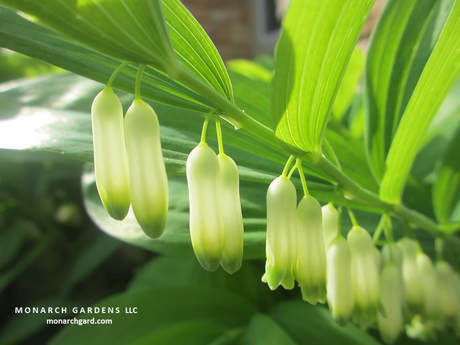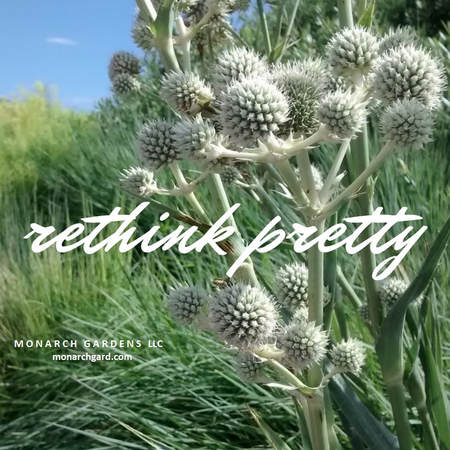What could we use instead that would help more pollinators and still be simple to grow? This is assuming you don't care so much how the plant looks in comparison to a hosta or daylily (no apples to apples here), but simply how it acts and how easy it is to cultivate. So for hosta we're looking at plants that thrive in dry shade, and for daylily plants that enjoy medium to dry sun. Plus, if you use all 5 suggested plants for each replacement, you're getting a bigger bloom succession and helping far more adult pollinators.
You'll find all of the below perennials featured more in depth in our plant profiles.
HOSTA
Calico Aster (Syhphyotrichum lateriflorum)
-- dry to dappled shade
-- about 2' wide and 2-3' tall (more moisture means bigger plant)
-- early fall white flower with yellow center that turns pink (turning pink tells pollinators the flower is empty)
-- all asters are highly prized pollen and nectar sources
Zigzag Goldenod (Solidago flexicaulis)
-- dry to moist, shade to part sun (more sun, more moisture)
-- 2-3' and tall depending on moisture, slowly spreads
-- early to mid fall, richly-scented blooms
-- incredible adult pollinator diversity
Solomon's Seal (Polygonatum biflorum)
-- dry to medium soils in shade
-- 2' tall and spreading slowly
-- mid to late spring blooms prized by queen bumble bees
-- smooth foliage like hosta
-- dry to medium soils in shade
-- 2' tall by 12-18" wide
-- wiry stems with airy blooms mid spring with delicate leaves the size of dimes
-- plant in masses for best effect
Wild Geranium (Geranium maculatum)
-- dry to medium soil in shade to sun (more sun, more moisture)
-- 1' tall and slowly spreading for a superb groundcover among taller plants
-- late spring blooms with some rebloom in summer
-- pollen accessible to variety of insects
DAYLILY
Wild Blue Indigo (Baptisia australis & B. minor)
-- dry to medium soils in full sun
-- 3-4' tall and 2-3' wide and 2x2' for minor (there are even more species than the above!)
-- mid spring bloom with large jet black seed pods in winter
-- host plant for sulphurs and prized by queen butterflies
Pale Purple Coneflower (Echinacea pallida)
-- dry to medium soils in full to part sun
-- 2-3' tall and 1' wide
-- early to mid summer bloom
-- a coneflower that has pollen, vs. many of the hybrids out now
Rattlesnake Master (Eryngium yuccifolium)
-- slightly moist to slightly dry soil in full to part sun
-- 3-4' tall and 1-2' wide
-- mid summer bloom
-- highly attractive to adult insects
-- medium to dry soils in full to part sun
-- 2-3' tall and 1-2' wide
-- early to mid fall bloom
-- smooth foliage and gobs of insects
Aromatic Aster (Symphyotrichum oblongifolium)
-- medium to dry soils in full sun
--1-2' tall and 2-3' wide (shrub-like appearance)
-- mid to late fall bloom, tons of flowers
-- one of the last food sources for migrating and late-season insects




 RSS Feed
RSS Feed

